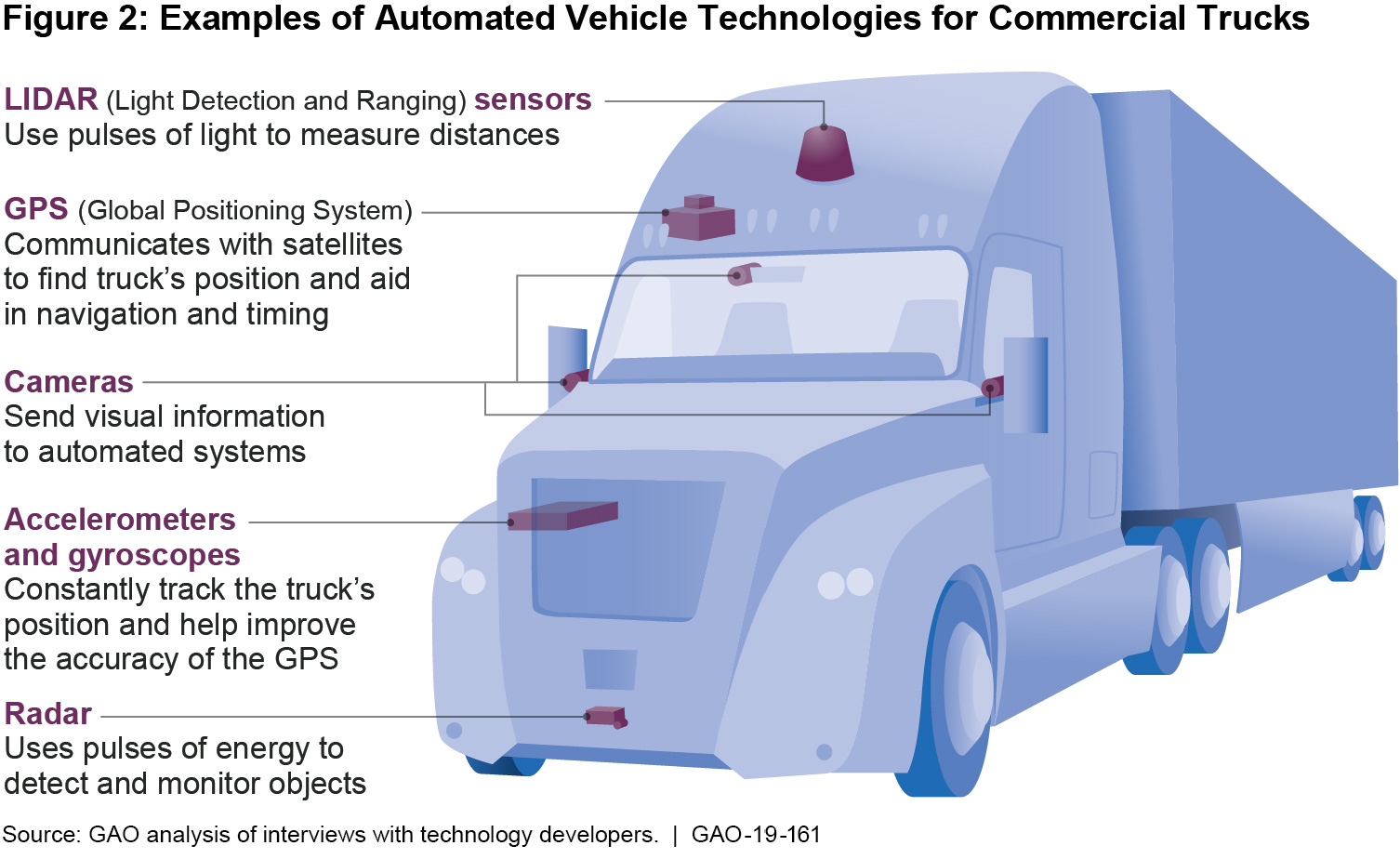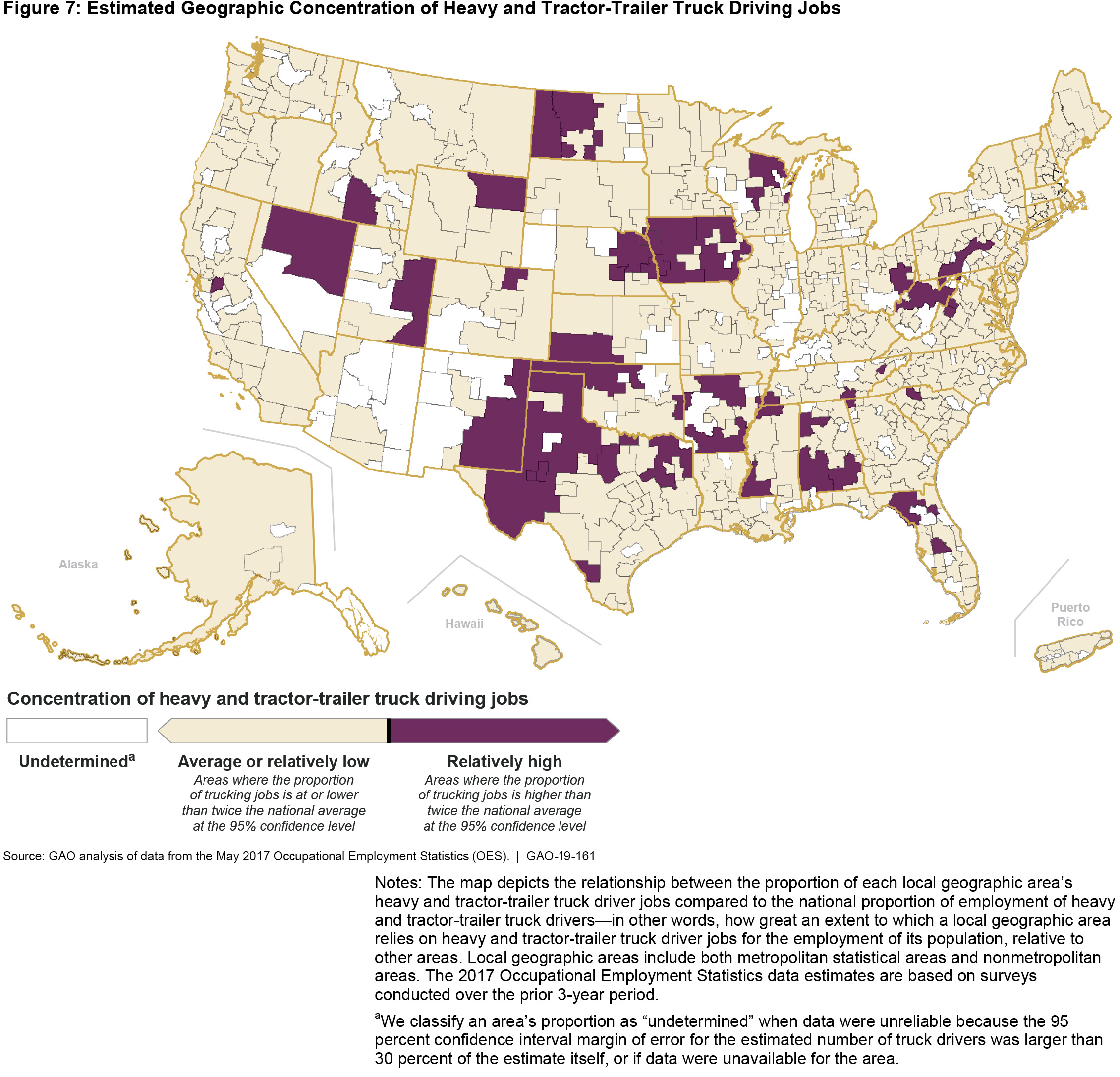Trucking Shifts into the Future
Will there come a day when the big rig in the lane next to you doesn’t have a driver? Trucks that have some automated features—or that even drive themselves—are on the horizon, and they have the potential to improve efficiency and traffic safety. But what will automation mean for the country’s 1.9 million heavy and tractor-trailer truck drivers?
Read on and listen to Cindy Brown Barnes, a director in our Education Workforce and Income Security team, to learn about the potential effects of automated vehicle technologies on the commercial trucking workforce, and how federal agencies are preparing.
Self-driving trucks coming down the pike
Automated trucks are being developed for long-haul trips—often hundreds of miles and days to weeks in length. These trucks have features that range from relatively simple driver assistance systems, to sensors and cameras that could help a truck drive itself.
Although this technology is currently in the works, stakeholders—such as technology developers—said it may be 5 to 10 years before automated trucks become available for commercial use. The timing depends on factors including technological limitations, state laws, cybersecurity, and public perception.
Rough road ahead for truck drivers?
So how will automated vehicle technologies affect the trucking workforce? Stakeholders predict 2 possible scenarios:
- Self-driving trucks will be used on the highway portions of long-haul trips, likely resulting in fewer trucking jobs and lower wages; or
- Self-driving trucks will still need operators to perform tasks like repairing flat tires and managing emergencies, possibly changing the skillset and wages of truckers without significantly affecting the number of trucking jobs.
Many stakeholders believe automation could bring new trucking jobs, such as specialized technicians and mechanics, but these jobs may be located in different geographic areas, and require different skills, than the jobs lost. Areas with high concentrations of trucking jobs may be particularly affected by the adoption of automated technologies.
Several technology developers said they are focusing the initial development of automated trucking technology in the southwest United States because of its good weather and long highways. As a result, any future job losses could first occur there.
Before the rubber meets the road
Automated trucking won’t impact the workforce immediately, so federal agencies have an opportunity to prepare for its effects. The Departments of Transportation and Labor have both taken some steps to do so:
- Transportation has gathered perspectives from members of the public to inform regulatory changes.
- Labor has incorporated technology changes into its employment projections for truck drivers.
- Both agencies recently coordinated stakeholder outreach as part of an analysis of the workforce impacts of automated trucking.
We made 4 recommendations to Labor and Transportation, including that the 2 agencies continue to convene key stakeholders as automated trucking technology evolves. Doing so could provide the agencies with important insights to help them anticipate and respond to potential workforce changes.
Interested in reading more about automated vehicle technology? Check out some of our other reports:
- Automated Vehicles: Automated cars and light-duty trucks pose a range of safety and infrastructure challenges to policymakers.
- Vehicle-to-Infrastructure Technologies: Emerging technologies that allow roadside devices to communicate with vehicles and drivers may offer a range of benefits, but also have costs.
- Vehicle-to-Vehicle Technologies: The deployment of technologies that allow vehicles to detect imminent collisions by sharing data with each other presents a number of challenges.
Comments on GAO's WatchBlog? Contact blog@gao.gov.








